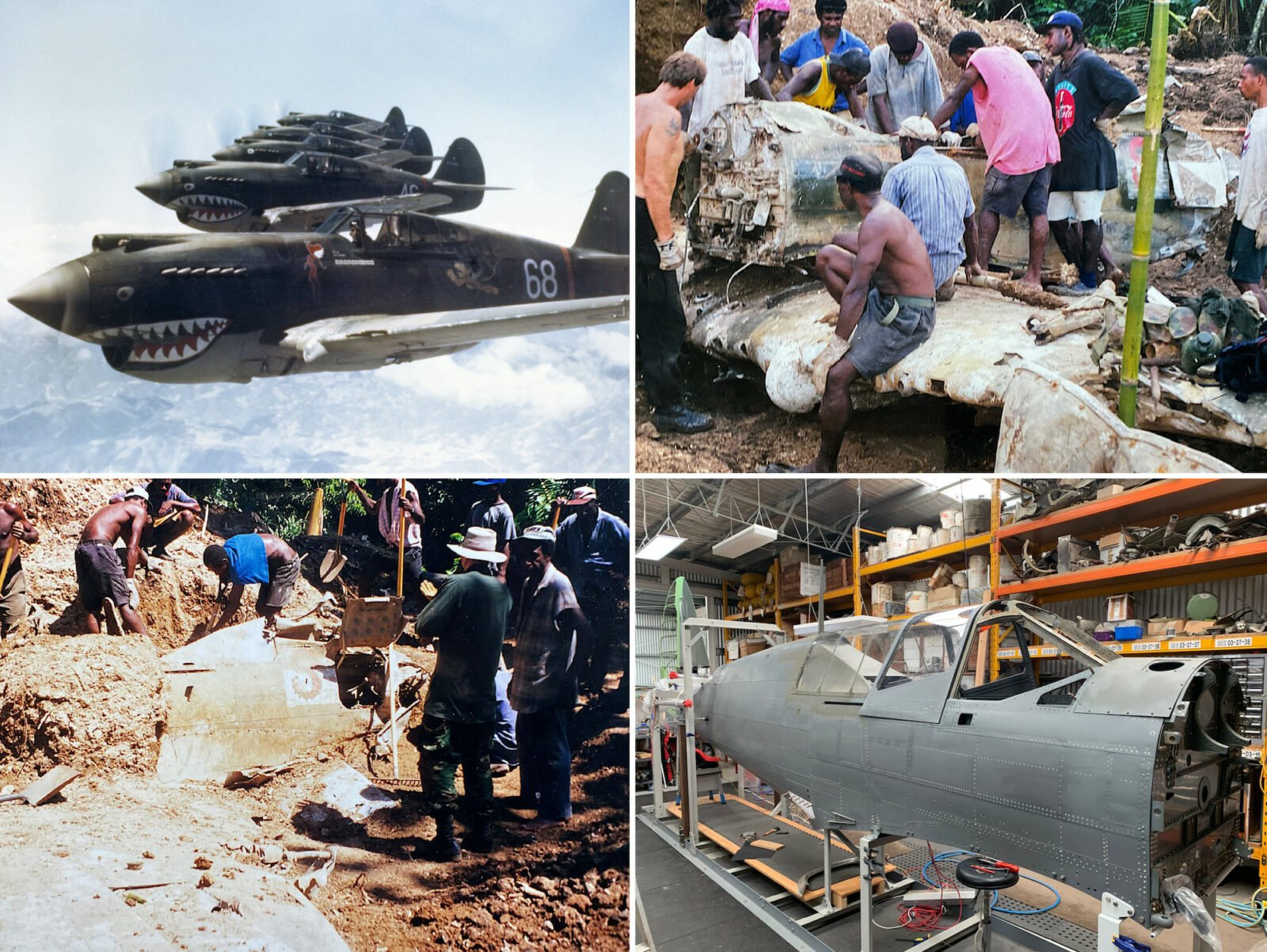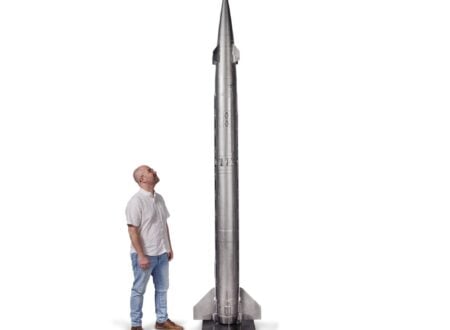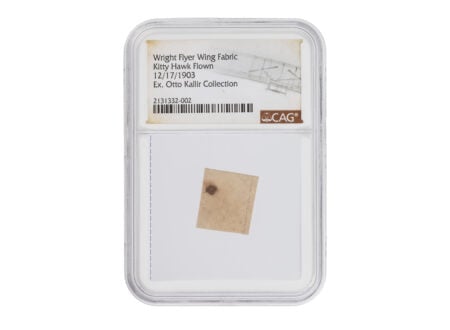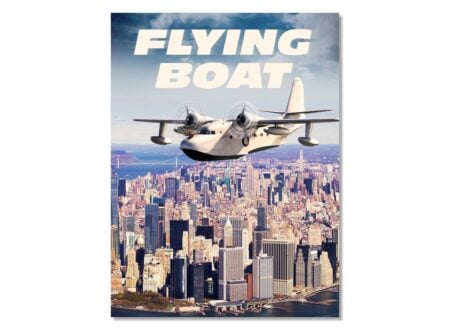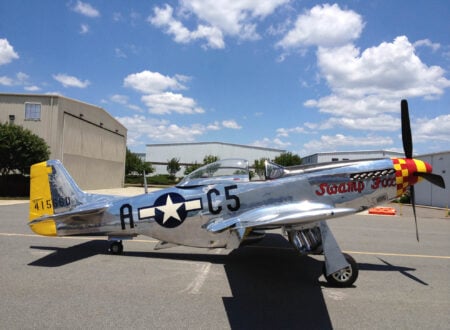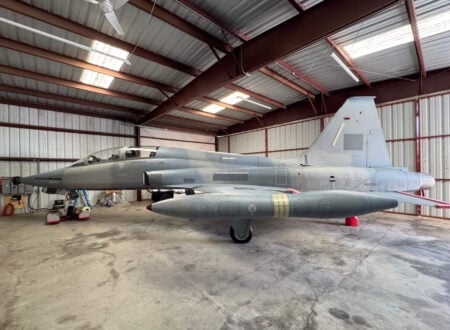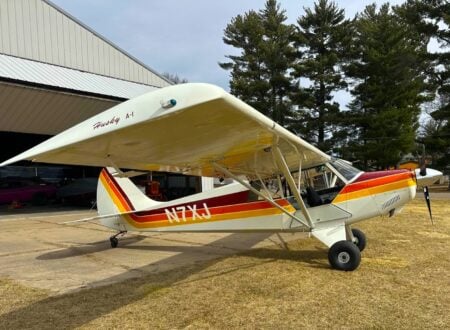This Curtiss P-40 Warhawk is one of the 13,738 that were produced during WWII, it was built at the Buffalo, New York Curtiss-Wright factory in 1942 and shipped off to the Pacific to be used in combat against the Imperial Japanese Army Air Service.
The majority of the aircraft were scrapped after the war, this one was buried by USAAF personnel on a Pacific island and it remained there for over 50 years. Fortunately it was rediscovered and excavated, and it’s now partway through a restoration to full flying status, and it’s now seeking a new owner to finish the job.
Fast Facts – The Curtiss P-40 Warhawk
- The Curtiss-Wright P-40 is a single-seat, single-engine fighter aircraft that was designed and built by the American aviation company Curtiss-Wright Corporation during World War II. The P-40 was one of the most widely used fighter aircraft of the war, and was used by numerous Allied air forces in a variety of roles.
- The P-40 Warhawk was powered by a single supercharged Allison V-1710 engine which provided a top speed of 362 mph and a range of over 1,000 miles. The engine had 12 cylinders arranged in a “V” configuration and it produced 1,150 horsepower depending on variant.
- The P-40 was armed with six .50 caliber machine guns, with three located in each wing. The aircraft also had the capability to carry bombs and rockets for ground attack missions.
- Although the P-40 was gradually replaced by newer and more advanced fighter aircraft later in the war, the aircraft continued to be used in a variety of roles, including ground attack and reconnaissance, and remained in service with some air forces until the end of the war.
The Curtiss P-40 Warhawk
The Curtiss-Wright P-40 Warhawk is a single-engine, single-seat fighter plane that was developed in the late 1930s by the American aviation company Curtiss-Wright Corporation. The P-40 was used extensively by Allied air forces during World War II, and was one of the most widely used fighter aircraft of WWII, seeing combat in North Africa, Europe, China, and the South Pacific.
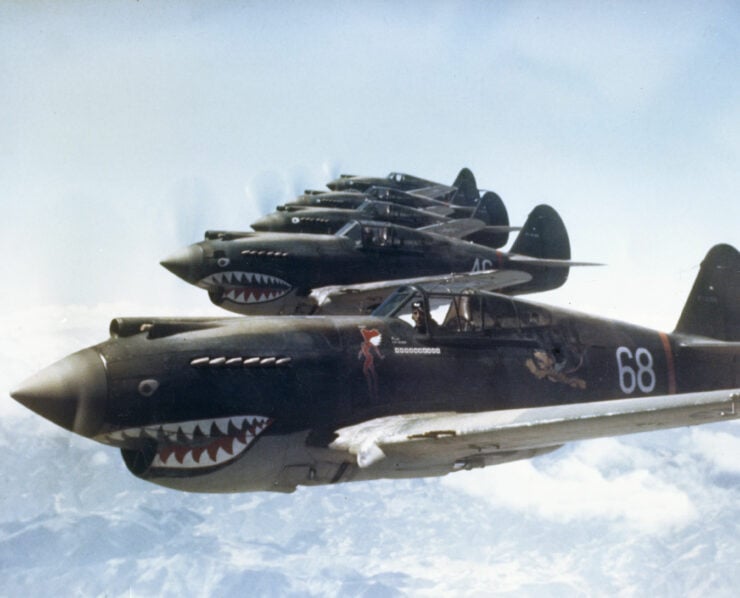

The development of the P-40 began in 1937, when the U.S. Army Air Corps issued a request for a new pursuit aircraft. The contract was awarded to Curtiss-Wright in 1938, and work began on the new aircraft, which was designated the P-40.
The P-40 was designed to be a fast, agile fighter aircraft that was capable of performing a variety of roles, including air-to-air combat, ground attack, and reconnaissance. The aircraft was powered by a supercharged Allison V-1710 engine, which provided a top speed of 362 miles per hour and a range of over 1,000 miles.
The P-40’s design was heavily influenced by Curtiss-Wright’s previous fighter aircraft, the P-36 Hawk. The P-40 featured a similar wing design and fuselage shape, but with several key improvements, including a more powerful engine, improved armor protection, and increased armament. The use of the earlier model as a staring point helped to significantly reduce development time.
WWII Deployment And Service
The P-40 entered service with the U.S. Army Air Corps in 1940, and was quickly put into action in several theaters of war. The aircraft was used extensively in North Africa and the Mediterranean, where it was used primarily for ground attack missions.
Above Video: This is an original World War II instructional film that teaches you how to fly the Curtiss P-40 Warhawk in approximately 28 minutes.
One of the most significant users of the P-40 was the Royal Air Force (RAF), which used the aircraft widely in the early years of World War II. The RAF deployed P-40s to the Middle East, North Africa, and the Far East, where they were used primarily for ground attack and reconnaissance missions.
The P-40 was also used by the Flying Tigers, a group of American volunteer pilots who were recruited to help defend China against the Japanese invasion. The Flying Tigers operated P-40s from bases in China, and were highly effective in their role, shooting down numerous Japanese aircraft.
Later in the war, the P-40 was gradually replaced by newer and more advanced fighter aircraft, such as the P-51D Mustang and the P-47 Thunderbolt. However, the P-40 continued to be used in a variety of roles and it remained in service with some air forces until the end of the war.
Due to the fact that the supercharged Allison V-1710 V12 didn’t have a two-speed supercharger like many of the enemy aircraft in Europe it was a target for fighters like the Focke-Wulf Fw 190 and Messerschmitt Bf 109 in high-altitude combat. As a result it was used more widely in North Africa, Southeast Asia, and China.
Curtiss P-40: The Variants
Over the course of its operational history, the P-40 was produced in several different variants, each with specific capabilities and modifications.
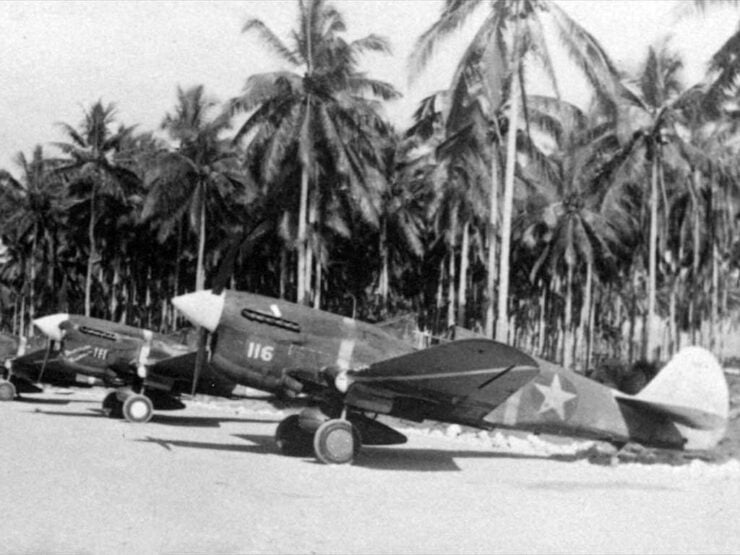

The P-40B and P-40C were the first production models of the aircraft, and were used primarily by the U.S. Army Air Corps. The P-40E was a later variant that featured a more powerful engine and improved armament.
The P-40F and P-40L were modified versions of the aircraft that featured more advanced avionics and weapons systems. The P-40N was the final production variant of the aircraft, and featured a stretched fuselage and improved armor protection.
In addition to the standard production variants, several special variants of the P-40 were produced for specific roles. The P-40F-5 was a modified version of the aircraft that was used for reconnaissance missions, while the P-40N-5 was a ground attack variant that was equipped with rockets and bombs.
The “Buried” Curtiss P-40 Warhawk Shown Here
The aircraft you see here is a Curtiss P-40 Warhawk that was buried sometime towards the end of WWII on a South Pacific island by United States Army Air Forces (USAAF) personnel after it was written off, possibly as they transitioned to the newer P38.
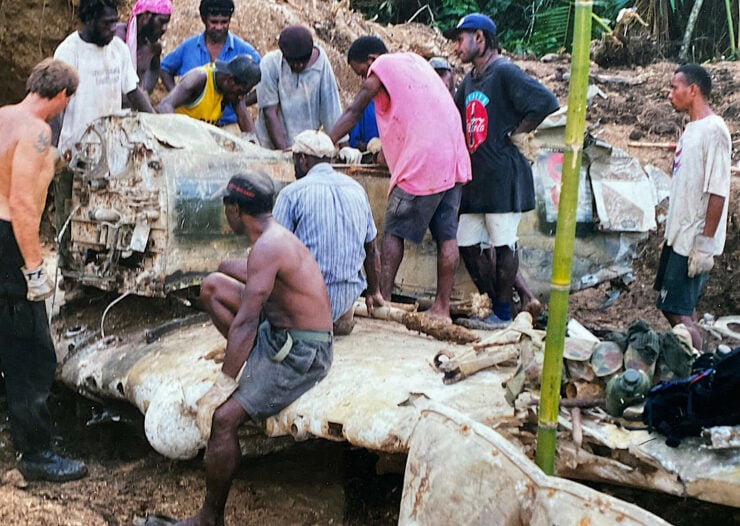

During its active life in the war this Curtiss was piloted by Lt. H. W. Harris and Lt. J. J. O’Neil who shot down three or more enemy aircraft in the Spring of 1944. This plane was known as White 17 with the nose art “Spooky” and “Dolores” when it served with the 7th Fighter Squadron of the 49th Fighter Group USAAF.
After 50 years buried underground the aircraft was rediscovered and carefully excavated, it’s new owner decided to have it returned to flying condition, no mean feat given its condition, and the restoration process began in 1999.
During the long rebuild the fuselage has been returned to almost complete condition as well as the internal equipment. It’s now being sold as-is with the substantial original wreckage including original wings confirming identity and provenance of this historic airframe.
The aircraft is being sold through Platinum Fighter Sales out of Melbourne, Australia with an asking price of $695,000 USD. This price will change over time as the restoration continues to progress. If you’d like to read more about the aircraft or enquire about buying it you can visit the listing here.
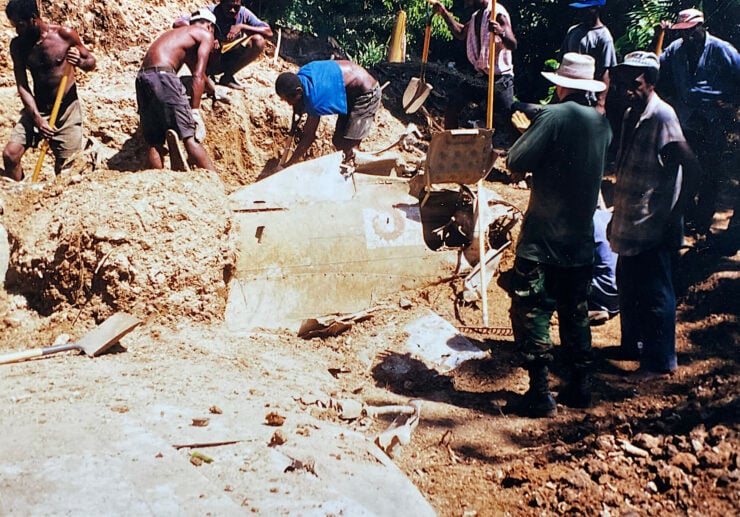
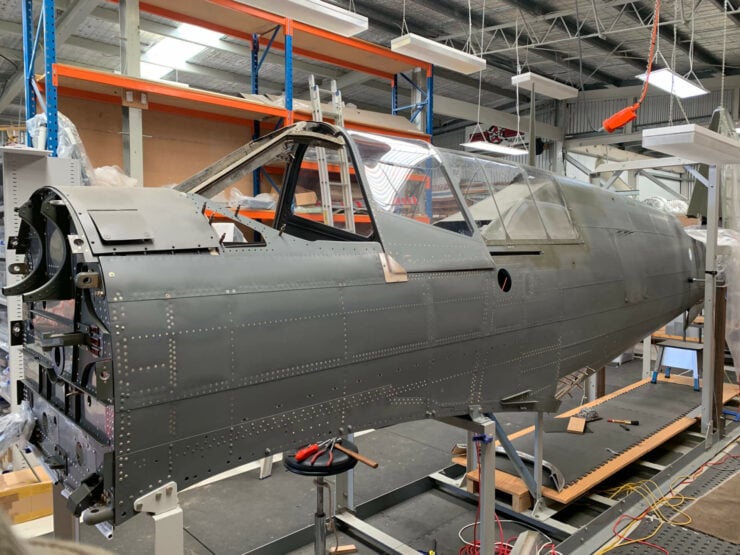
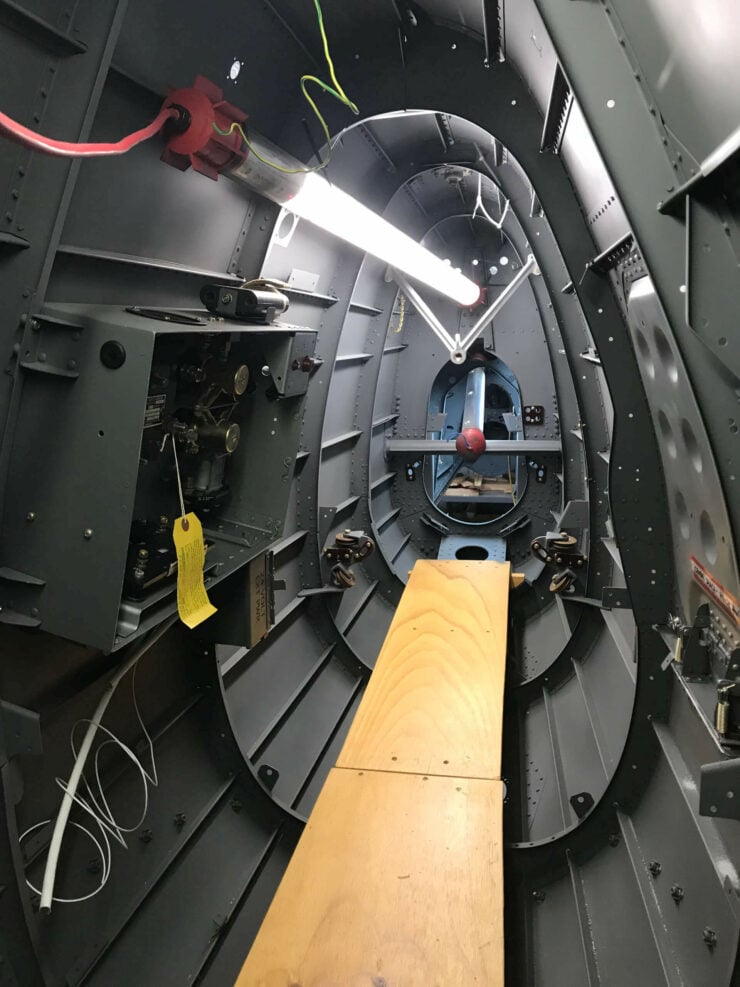
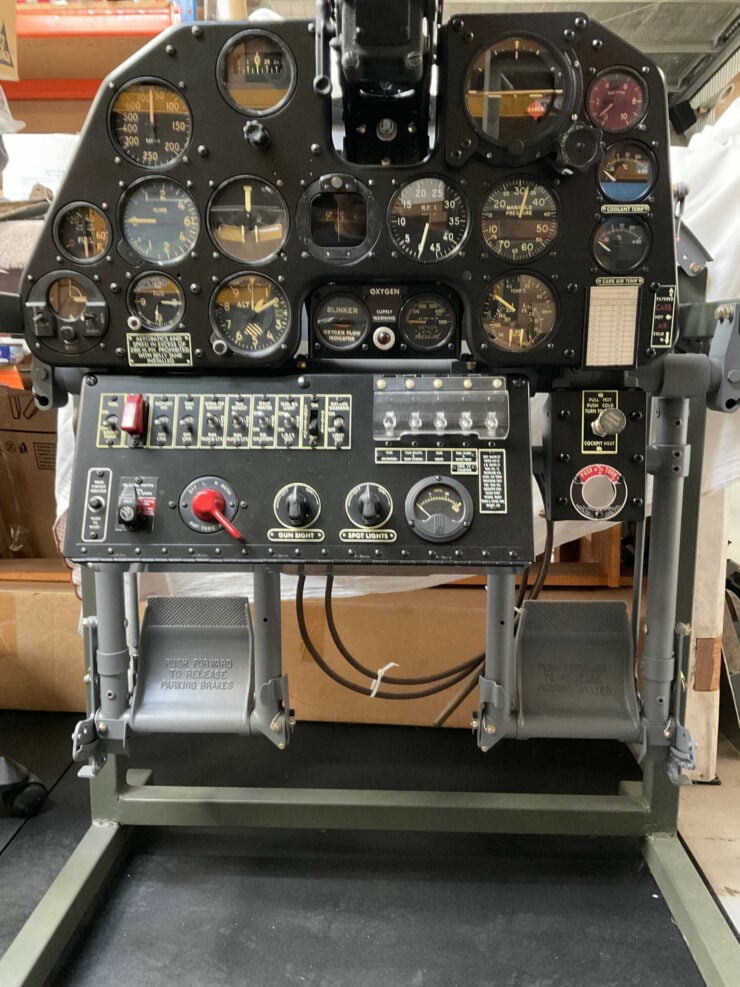
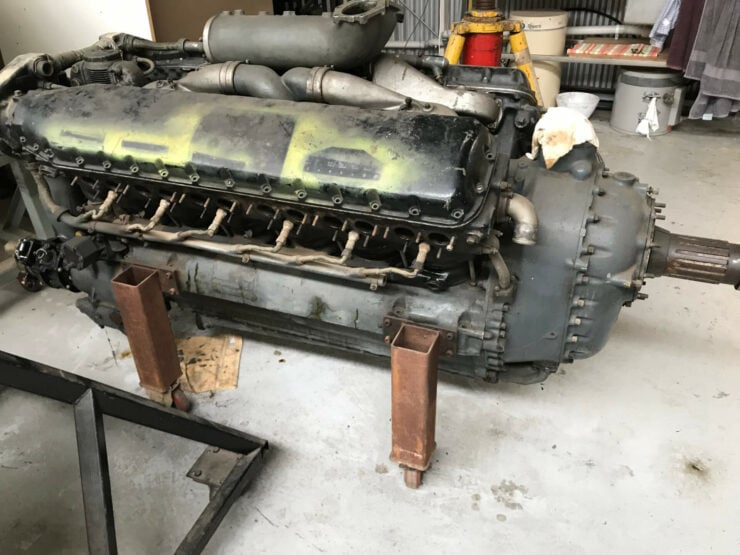
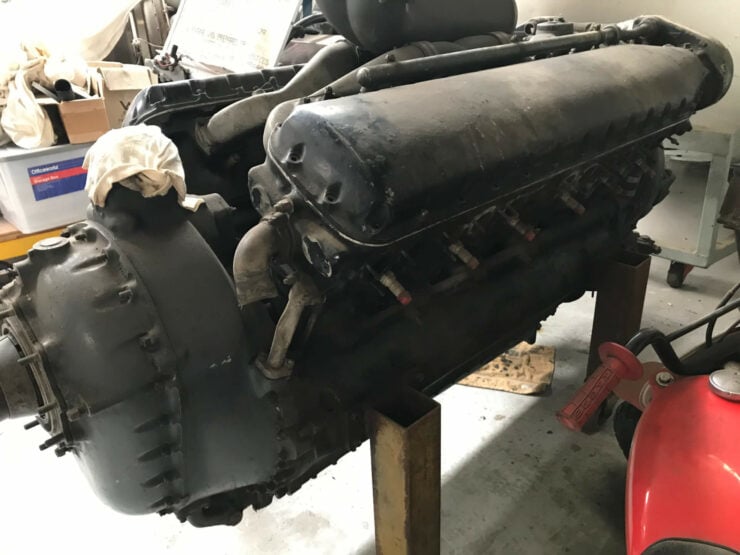
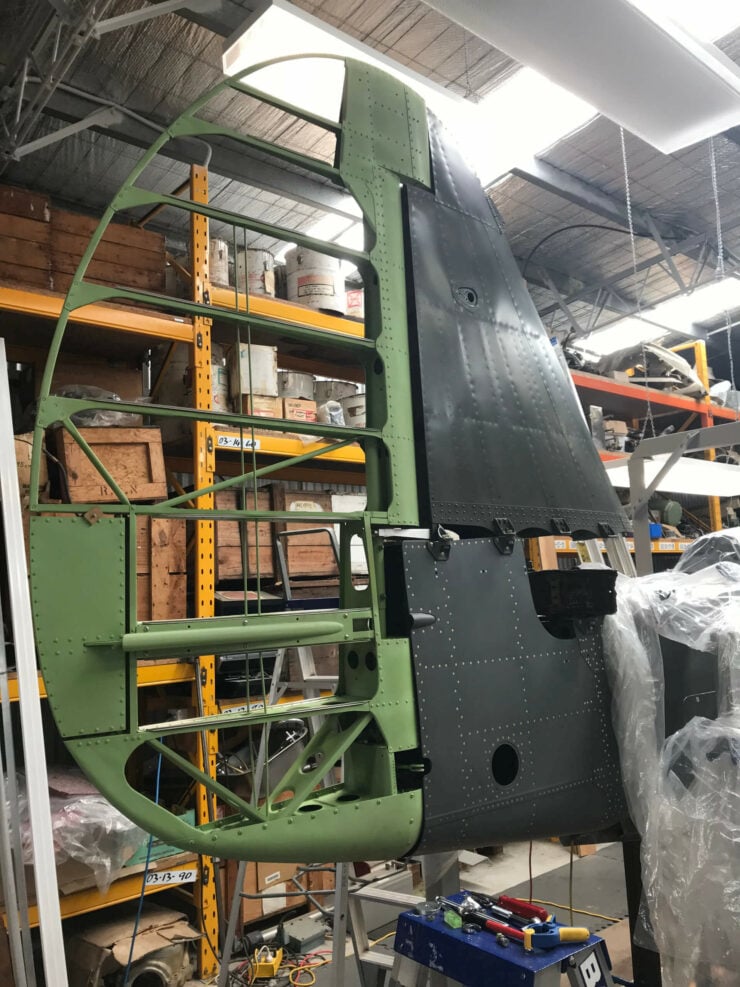
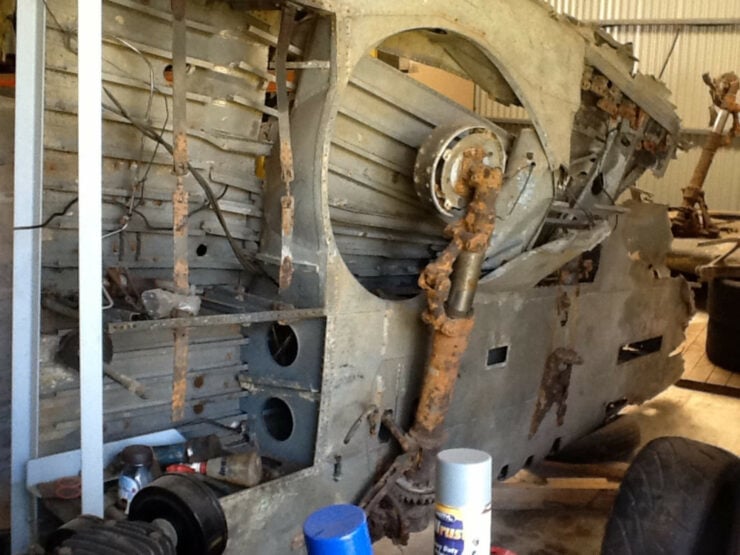
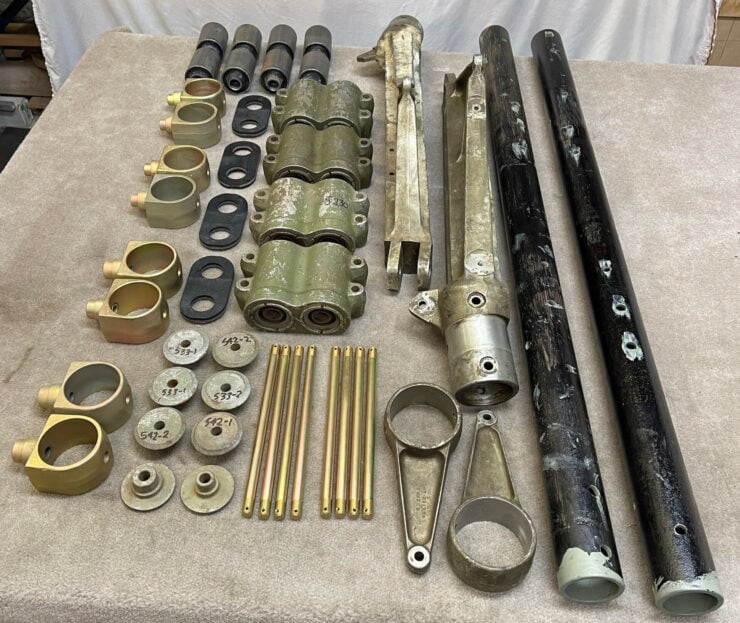
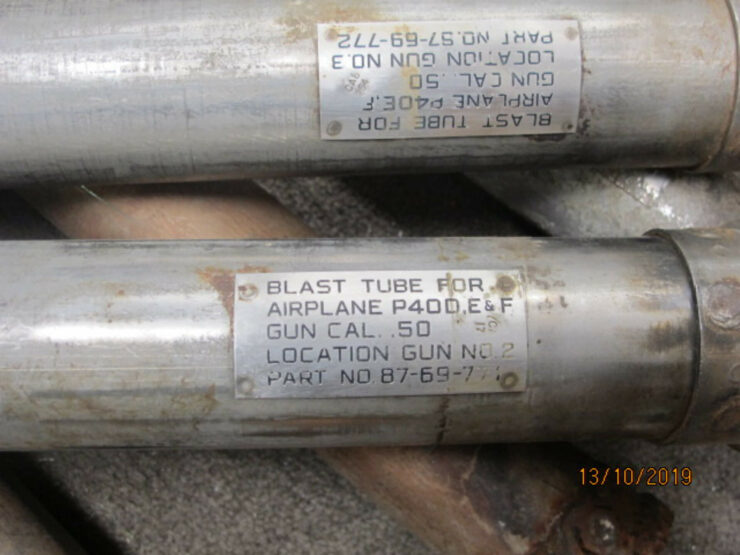
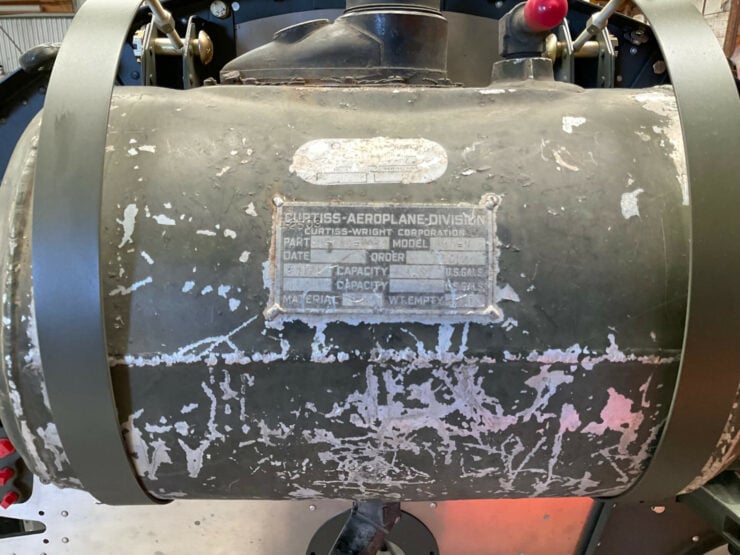
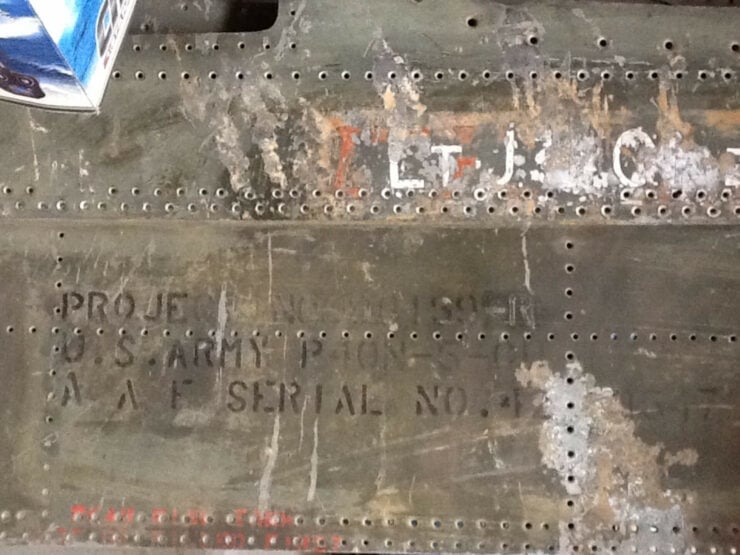
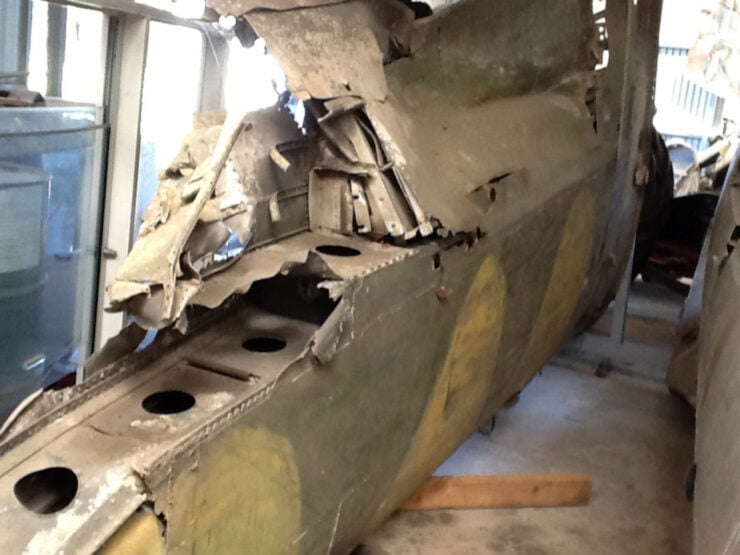
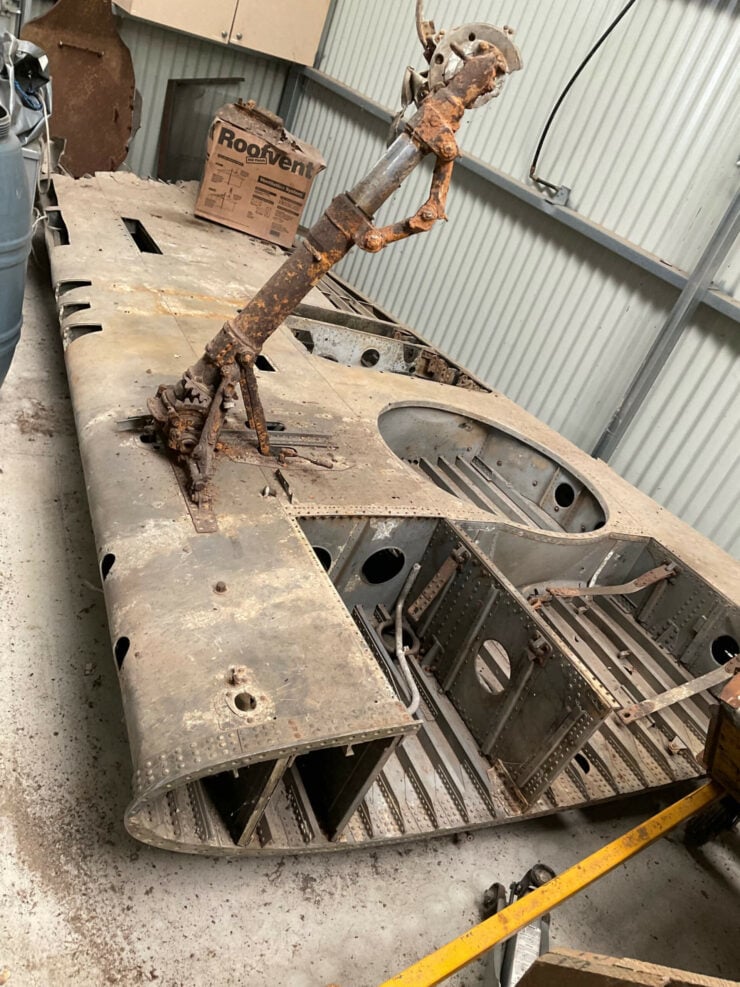
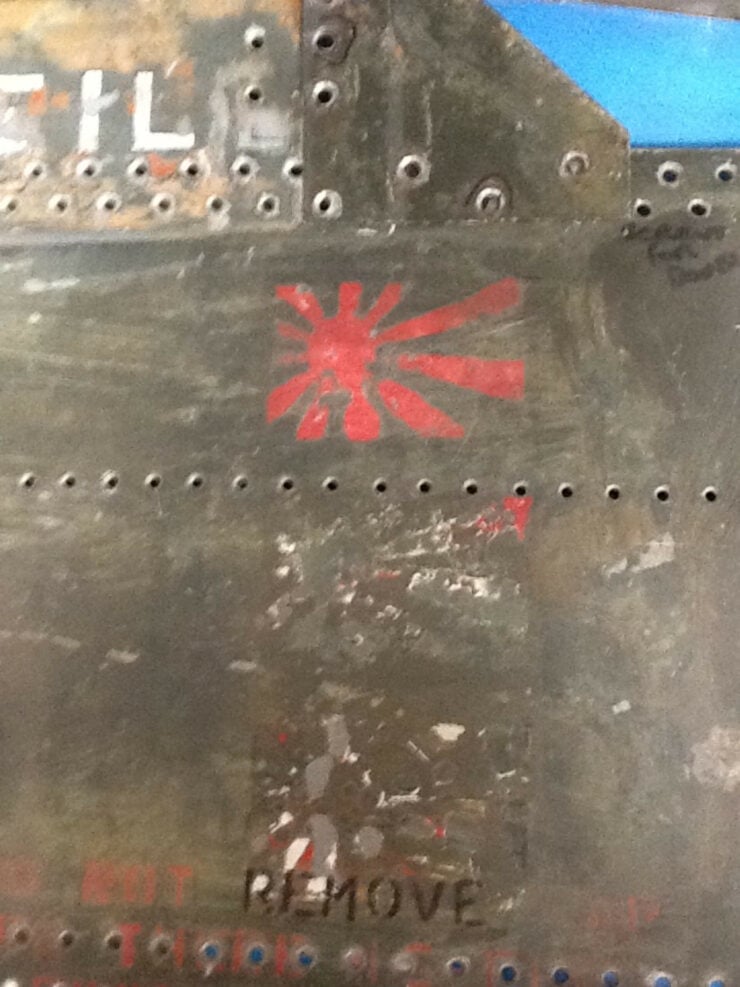
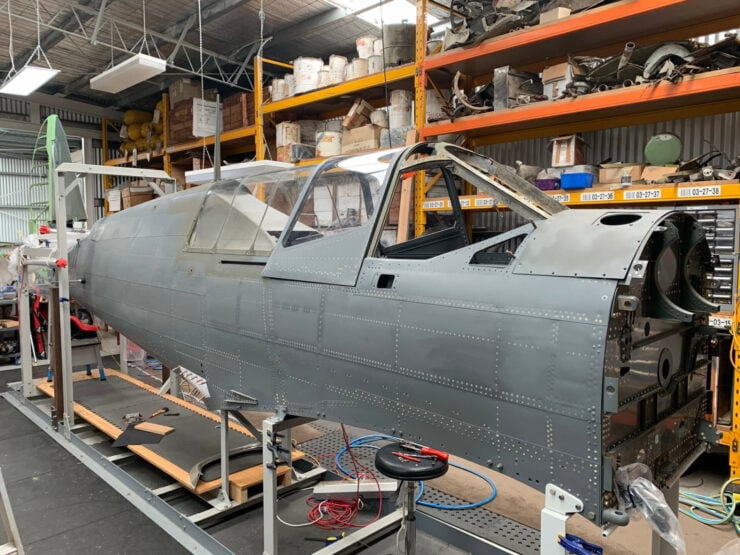
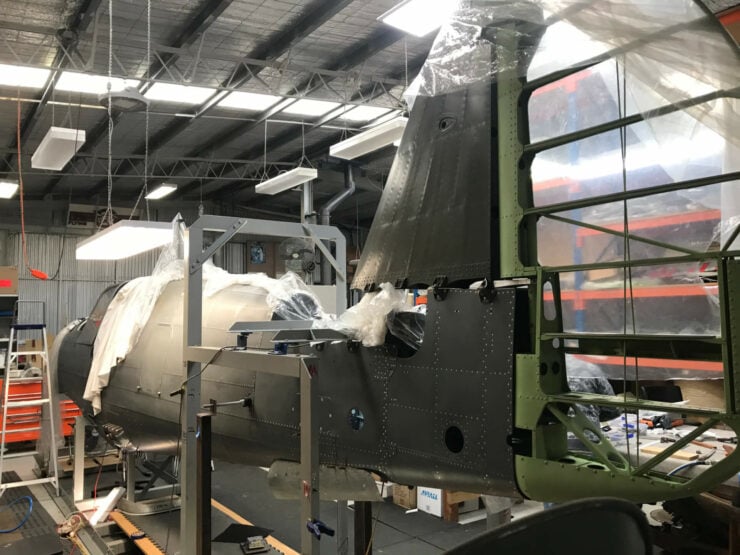
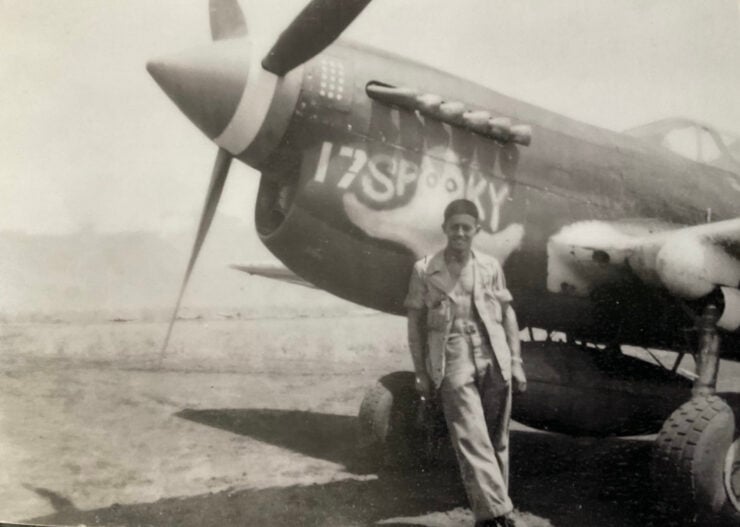
Images courtesy of Platinum Fighter Sales

